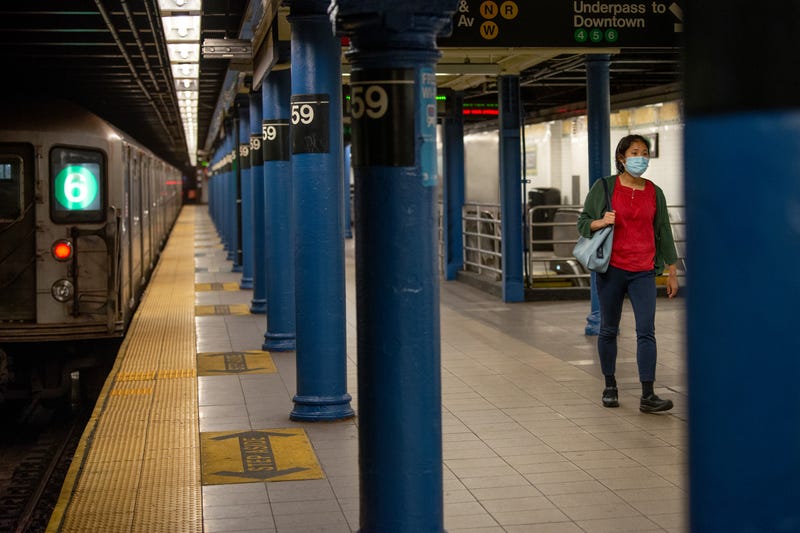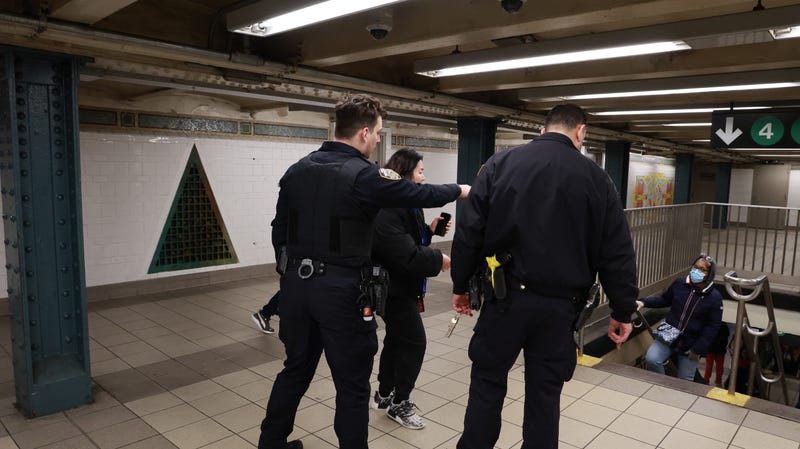
NEW YORK (BLOOMBERG) -- New York City’s two subway stations with the highest number of violent crimes are along the popular 4/5/6 lines that run down Lexington Avenue, according to a report by urban policy think tank Vital City.
Manhattan stops on those lines at 125th Street and Lexington Avenue/59th Street topped a list compiled in the crime analysis, which was published last week. Both stations are major hubs and not the worst on a per-ride basis, however. The greatest risk per passenger tends to be at smaller outlying stations in off-peak hours, Vital City said.
Violent subway crimes have been on an upward trend since 2014 “with a particular acceleration” after 2020, Vital City said, citing quarterly data. Assaults, perpetrated disproportionately by repeat offenders struggling with mental illness and homelessness, have driven a surge in subway violence even as crimes such as grand larceny and robbery have declined, the think tank said.
“This indicates a fundamental change in the character of subway crime from calculated criminal activity to more spontaneous violence,” Vital City said in the report, which was based on a briefing led by University of Pennsylvania criminologist Aaron Chalfin. “Overall, the increase has been driven by assaults, not robberies.”
A spate of subway attacks have occurred since the report appeared:
• Early Tuesday, a 46-year-old man was slashed repeatedly by another man with a knife on a 2 train in Manhattan, the New York Post reported. The victim was hospitalized and the alleged attacker was caught by police.
• On Monday, a 23-year-old woman was pushed into a moving A train in Manhattan. She is expected to survive and police detained a suspect, the Post said.
• On Sunday, a 25-year-old man was stabbed aboard a 5 train in the Bronx. He is recovering in the hospital and police are looking for his attacker, according to local media.

“We’ve been saying for a long time that when mentally ill people shelter in the subways, it’s bad for them, bad for riders, and bad for the system that failed to provide proper help,” John McCarthy, chief of policy and external relations at the Metropolitan Transportation Authority, said in a statement on the Vital City report.
“As this study shows, there’s no question this societal problem touches transit and has changed the nature of crime underground,” McCarthy said.
Last week, Governor Kathy Hochul and Mayor Eric Adams announced a six-month effort to deploy two police officers on most overnight trains on the subway, the nation’s largest public transportation system. They made the move after several high-profile subway crimes, including the murder of a homeless woman who was lit on fire aboard an F train in Brooklyn.
Half the violent subway crime occurred at just 30 of the system’s 472 stations, according to Vital City. Crimes that occur on trains were assigned to the closest stations.
At the 125th Street station on the 4, 5 and 6 trains, the peak times for crime were between 4 p.m. and 8 p.m. At Lexington Avenue/59th Street, it was between 12 p.m. and 4 p.m.
The Vital City report also spotlighted crime at subway stations such as Grand Central; 59th Street-Columbus Circle on the A, B, C, D and 1 trains; and the 74th Street-Broadway/Jackson Heights station on the 7, E, F, M and R lines in Queens.
Most crimes occur during peak ridership hours, Vital City said. On a per-person basis, however, the most dangerous time to ride the subway was late at night and in the early morning at less busy stations.
“During rush hour, the risk to an individual rider is about one violent crime per million rides,” the think tank said. “But in the early morning hours, that risk is 20 to 25 times greater.”
